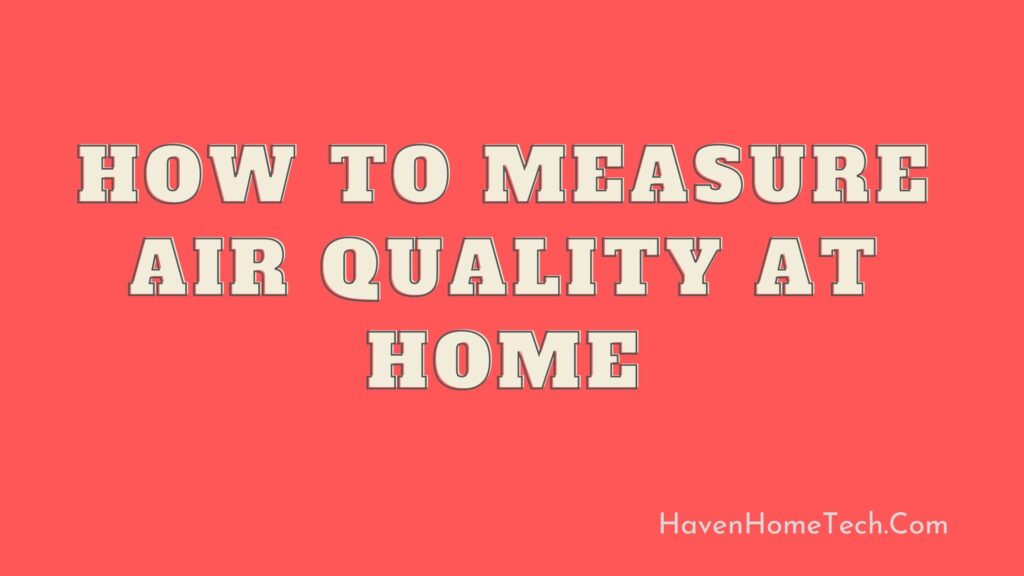
The air inside your home could be more polluted than the air outside. Indoor air quality may vary depending on your location and even in different parts of the house.
Probably by now, you’re wondering how you can tell whether the air in your home is polluted. Well, here is a guide on how you can measure air quality at home.
Quick Navigation in this Resource
Carry out a Radon Test
Radon is a colorless and odorless gas that forms from the breakdown of uranium deposited on soil. There is a strong connection between radon and poor indoor air quality.
Usually, the gas enters a home through cracks in the duct work or faulty floors. According to research, more than half percent of lung cancer deaths is a result of radon gas accumulation in American homes.
You can conduct short term or long term radon tests without requiring any expert help.
The short term test kits are easy to use and can tell the level of radon gas in your home within 3 to 7 days.
The long term test kits are electric and are best to use for more extended periods of between 3 months to one year.
Always place radon test kits in areas you feel could have a higher risk. Also, avoid using such areas or opening doors and windows.
As a matter of course, external factors such as wind, heat, or light could alter the test results.
Use an Indoor Air Quality Monitor
Air quality monitors are the next big thing if you want to track all aspects of your home in one device.
Most air quality monitors will measure the levels of pollution by elements such as carbon monoxide, dust, pollen, mold, humidity, and temperature. In addition, the monitors have a screen display that shows the readings at all times.
Indoor air quality monitors are electric and should always remain plugged on the wall of your target areas in the house.
More than that, with some monitors, you can even operate using an application on your phone, enabling you to track air quality in your home from anywhere in the world.
Conduct Carbon Monoxide Tests
Carbon monoxide remains the number one smooth killer because it has no taste, smell, or color. The gas can kill you in a blink of an eye if you get exposed to it for long.
CO is lighter than oxygen; thus, it will mainly rise above the air. You can use an indoor air monitor to test for the gas, but it’s not sufficient for testing carbon monoxide independently.
The best way to measure the levels of carbon monoxide in your home is by using carbon monoxide alarms. It’s best to place the alarms high on the walls where the gas rises and can get detected fast.
Carbon monoxide alarms will make alert sounds whenever the gas levels are more than the acceptable limits.
Probably you’re wondering where the gas could come from in your house. Carbon monoxide is produced during combustion of gas.
Besides, gas dryers and heating systems could also emit carbon monoxide polluting your home.
Check the level of Mold in the Air
Mold accumulation in the house can affect the health of your family over time. Well, the truth is that mold spores lurk in the air almost everywhere, including inside your house.
There isn’t any specific tool to measure for mold in your home, but you can easily detect signs of moldy conditions.
If you see any black spores on your walls, then it could be a sign of mold. Over and above that, a room infested by mold usually produces a musty smell that’s almost similar to that of dirty socks.
Moldy houses also cause migraines, runny nose, and sore throats to the occupants. If you realize you have an infestation of mold, it’s best to hire an expert to diagnose the problem.
In conclusion, the air quality inside a house could become more polluted than outdoors. Depending on the geographical location of your house, air quality may vary.
Indoor air quality measurement is easy and fast.
Not least of all, the essential aspects of testing in a home are humidity, temperature, carbon monoxide levels, mold, and radon accumulation.
It may be necessary for you to mind the humidity of your house.